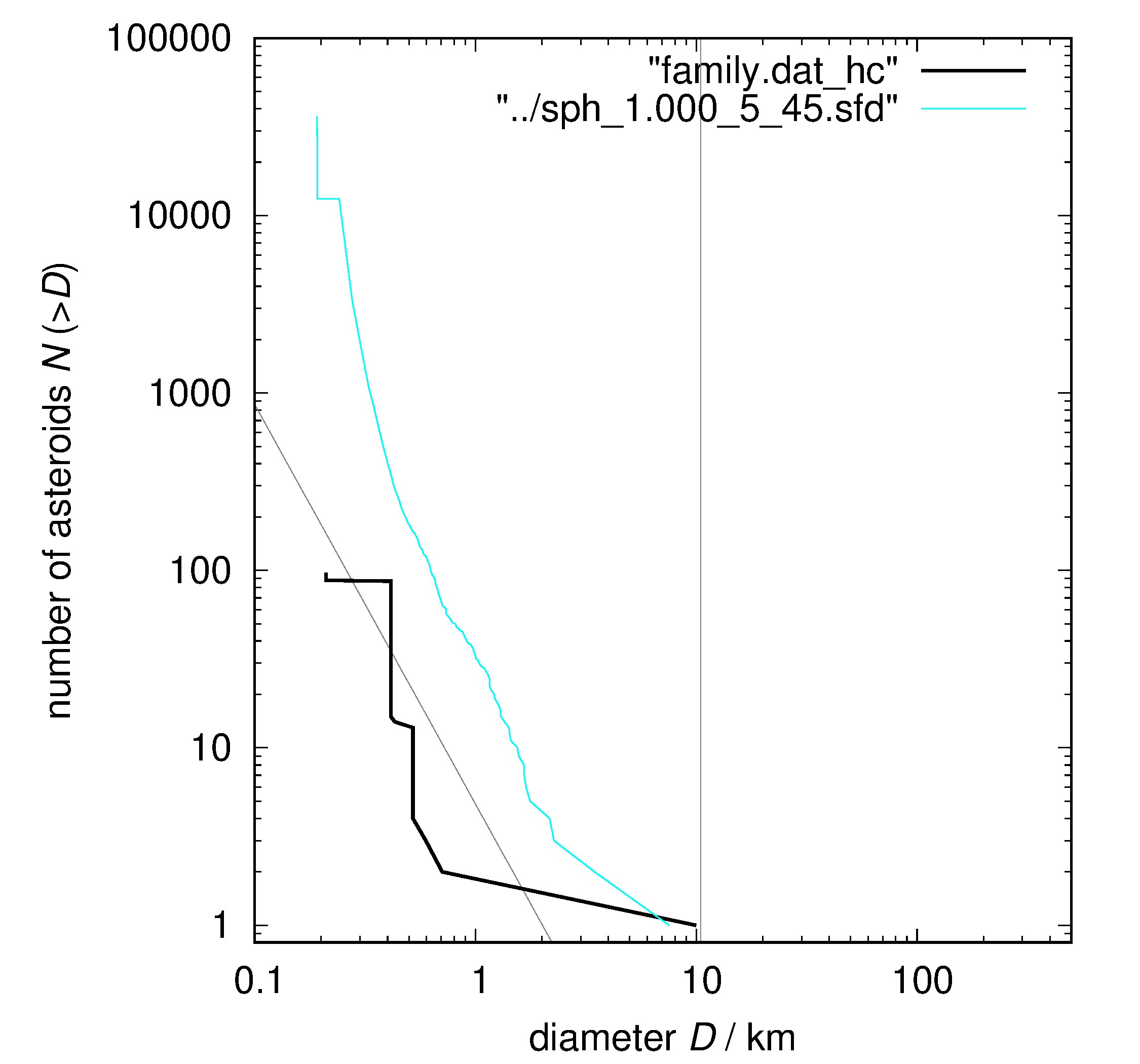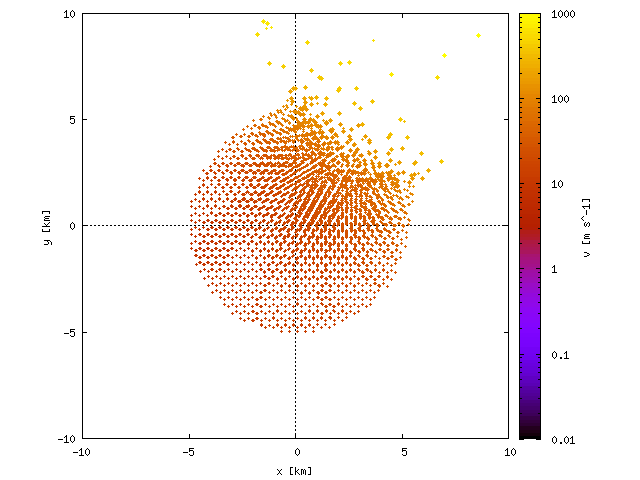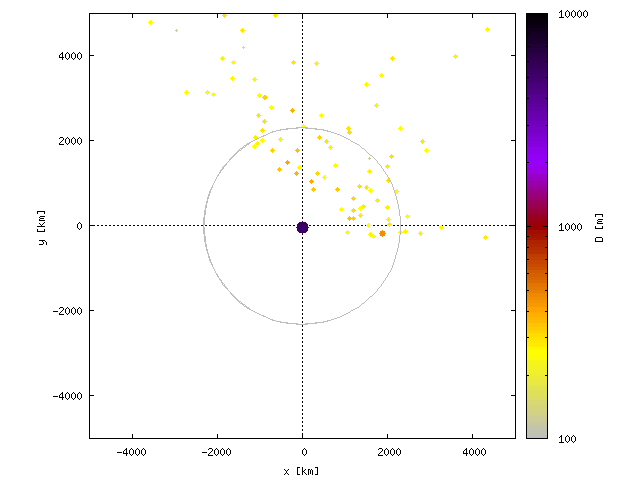








We vary the time span of fragmentation phase (rows; 10, 100 and 1000 sec), and two reaccumulation parameters (columns; Merge velocity limit and Merge rotation limit). The mode is always Merge or Bounce, Repel or Merge; using (0, 0) essentially means Force Merge though.
SFDs:
| *_MB_RM_0.5_1_0_0 | *_MB_RM_0.5_1_1_0 | *_MB_RM_0.5_1_4_1 | ||
| test_reac_10s_* |  |
 |
 |
early handoff and Force Merge leads to overlaps, immediate reaccumulation and a big LR |
| test_reac_100s_* |  |
 |
 |
for (4, 1) there is a trend towards small LR, but... |
| test_reac_1000s_* |  |
 |
 |
... it's just the opposite for the very late handoff! Coincidentally, it seems similar to the early handoff, but see the velocity fields below! |
Handoff:
| *_MB_RM_0.5_1_0_0 | *_MB_RM_0.5_1_1_0 | *_MB_RM_0.5_1_4_1 | |
| test_reac_10s_* |  |
 |
 |
| test_reac_100s_* |  |
 |
 |
| test_reac_1000s_* |  |
 |
 |
Final state (circle is the Hill radius, r_H = a (m/(3 M_S))^(1/3)):
| *_MB_RM_0.5_1_0_0 | *_MB_RM_0.5_1_1_0 | *_MB_RM_0.5_1_4_1 | ||
| test_reac_10s_* |  |
 |
 |
|
| test_reac_100s_* |  |
 |
 |
|
| test_reac_1000s_* |  |
 |
 |
the structures in the velocity field are fully developed only in the longest SPH run! See, e.g., "spirals" of fragments released from the impact point, or from the antipode (cf. LF) |
Conclusion: It's very important to continue the SPH run as long as possible! It's surprising because tau = 2 D/v_imp is small, but small D, means also small v_esc, as well as v_ej. Fragments move so slooowly that one has to wait up to 1000 s until everything is fragmented and dispersed.